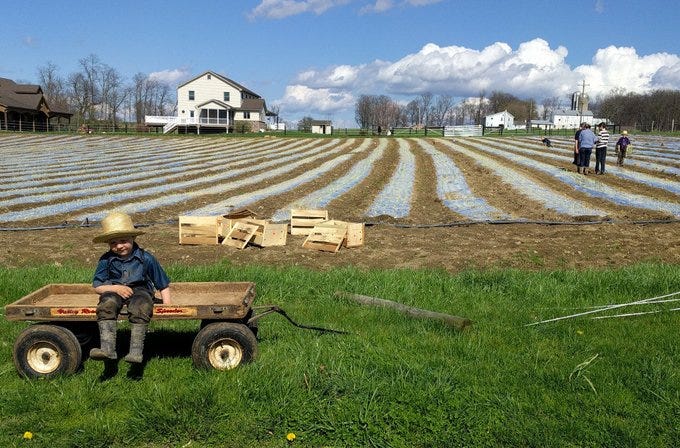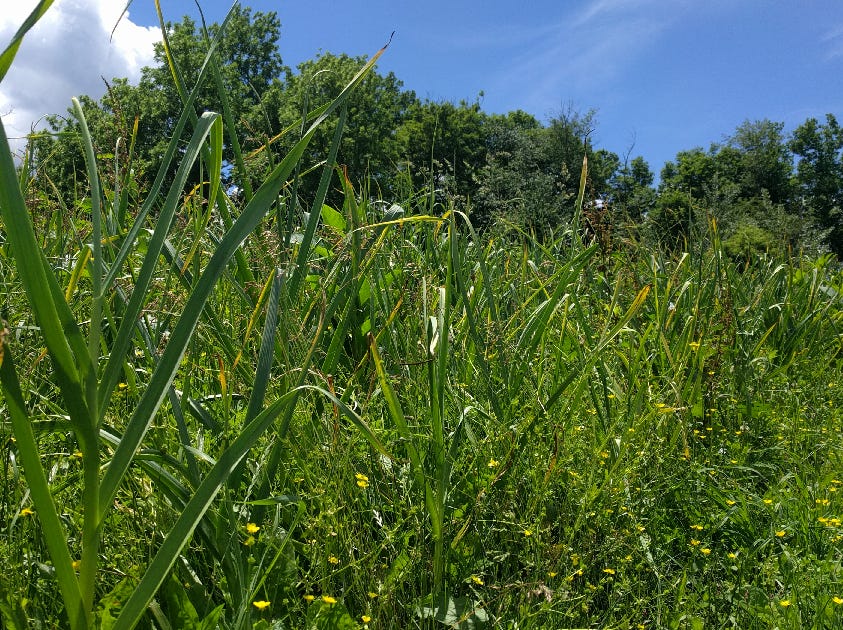Methods Farmers use to Avoid Spraying with Harmful Pesticides
In this picture we were helping our Amish friend in his organic onion field. To control weeds, many organic farms instead of using chemical pesticides, use plastic mulch or Ag film that deprives the weed seeds of sunlight/rain while allowing the plant shoots to grow through (zoom in on the white strips to see the little sprouting onions).
In our own smaller garlic field (shown below), we use hay mulch instead of plastic mulch (used in larger farms). Both mulch methods are labor-intensive but allow the farmer NOT to use the harmful chemical pesticides used in conventional farms.
Compare our chemical-free regenerative garlic patch to a large scale commercial (sprayed) garlic field:
Organic farms that are much larger (100 acres or larger) use techniques like zapping the weeds (with electricity).
We of course use cover crops in between the seasons to minimize the growth of unwanted species (weeds) while nourishing the soil. Before cover crops go to seed, we either till them in the soil, or crimp them using a roller, in preparation of seeding the main (cash) crops.
I am not sure about the long-term (wisdom) pros and cons of any of these organic weed control techniques but we (my farming family) believe using hay mulch plus cover crops, although labor-intensive, are the closest to the nature’s regenerative style. In my books and presentations, I discuss the importance of staying close to nature’s bio-energetic balance (soil and crop’s living states).





